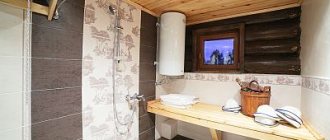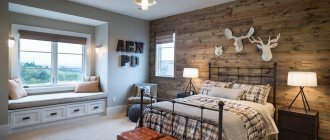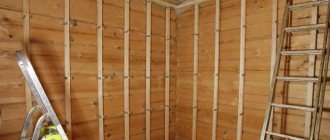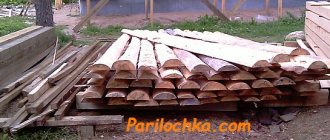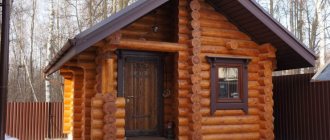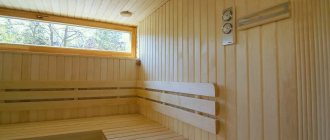The largest warehouse of larch products in Moscow. All varieties, more than 1000 m3 of products in stock.
+7 +7 Call daily Mon-Fri 9:00 - 18:00 Sat 09:00 - 15:00 Sun.
Day off More details
The Russian bathhouse is a place of healing and relaxation for body and soul. And it is not surprising that it was built from wooden beams, choosing coniferous trees. This is the most useful, durable and beautiful material. Of course, a species such as larch is distinguished by all these qualities. The tree grows in Siberia and the Far East, is extremely common and is the best material for finishing a bathhouse.
Larch lining in the bathhouse
The bathhouse is a room that is still extreme for wood, in which there is a wide difference in temperature and humidity. Not every material can withstand such loads.
Larch copes with moisture, hardens from prolonged exposure, is not afraid of temperature changes and, importantly, has low thermal conductivity. This means your sauna will retain heat inside. It is also worth noting other positive qualities of larch wood:
- Beautiful appearance;
- Environmentally friendly (does not release resin even when the temperature rises);
- Low fire hazard and flammability (cannot be compared with any other tree).
Larch lining will allow you to create the perfect lining in your bathhouse. If you use the elite grade Prima or Extra, then there will be no knots or smudges of resin on the surface, but this is not necessary. You can choose a budget option - grade A, B or C. They do not differ in anything in terms of strength or hardness, defects apply only to appearance: knots, cuts, resin passages, etc.
The only important nuance that needs to be taken into account when choosing lining for finishing a bath is that it darkens when exposed to moisture. To preserve its appearance, after installation it is necessary to treat it with wax or oil designed to protect the wood.
Types of lining profiles
In addition to the fact that different wood is used in manufacturing, the lining may also differ in type of execution:
- Eurolining for a bathhouse is a popular type with recesses that emphasize the structure of the wall due to deep seams.
- Seamless lining forms a continuous wall due to very narrow seams.
- Imitation timber creates the illusion of a flat log wall.
- The blockhouse, due to its convex shape, creates a classic wall of semicircular logs.
Profile types
How will larch behave in the steam room?
Larch is the most suitable option for finishing a bath not only because of its mechanical or performance qualities. Craftsmen especially highlight this conifer because:
- Larch lining allows you to maintain a high temperature in the steam room for a long time;
- Cosmetic repairs will not be required for several years, since the material is durable;
- The lining does not need to be constantly treated against mold and insects;
- Larch creates a feeling of comfort and has a beneficial effect on the human nervous system.
There are times when the larch in the steam room begins to flow - resin is released. This indicates that the material was poorly dried. To remove stains, the wood is sanded and treated with wax or stain.
Wooden shelves for a bath: wood type
Despite the fact that there are more suitable breeds than those described below, we decided to limit ourselves to the most popular ones . These will be: abash, linden, alder, aspen, cedar and larch.
Larch
It has both high density and viscosity, which determines its weight and hardness. The wood is sound, with a clear difference in color between sapwood and heartwood. Often the narrow sapwood is removed immediately. The color of the kernel is from red to brown.
The breed has high rates of resistance to rotting . And in water it only becomes harder, not inferior in safety to oak. Over time, even a nail becomes impossible to drive into it. Unfortunately, the initial drying of larch often leads to cracking of the wood. Shelves in a bathhouse made of larch are an excellent choice, although expensive.
| Average density | 550—590 kg/m³ |
| Density limits | 400—850 kg/m³ |
| Longitudinal shrinkage | 0,3 % |
| Radial shrinkage | 3,3 % |
| Tangential shrinkage | 7,8 % |
| Radial swelling | 0,14 % |
| Tangential swelling | 0,30 % |
| Flexural strength | 93 N/mm² |
| Compressive strength | 48 N/mm² |
| Tensile strength | 105 N/mm² |
| Thermal conductivity | 0.13 W/K m |
Linden
Famous for its softness. It has light, almost white wood that does not have a distinct texture. Almost the lowest rot resistance . It is both easy to process and easy to damage during use - the wood is easy to cut and has low density . The main advantage of linden for use in a bathhouse is its minimal deformation when moistened and dried. It is not prone to cracking either .
A linden bath shelf is a good choice. You can soak it in oil wax, then it will live longer in your steam room.
linden shelves, Extra grade
| Average density | 490–530 kg/m³ |
| Density limits | 320–600 kg/m³ |
| Longitudinal shrinkage | 0,3 % |
| Radial shrinkage | 5,5 % |
| Tangential shrinkage | 9,1 % |
| Radial swelling | 0,15–0,23 % |
| Tangential swelling | 0,24–0,32 % |
| Flexural strength | 90-106 N/mm² |
| Compressive strength | 44-52 N/mm² |
| Tensile strength | 85 N/mm² |
Aspen
It is probably one of the cheapest breeds on the market. The wood is light, one might say white, but with a slight green tint. It is similar in characteristics to linden - it is also very soft and light, and is also not resistant to rotting (that is, it needs to be impregnated with an antiseptic for protection, but not in a steam room). Almost does not crack when drying. Darkens quickly when humidified in a steam room.
Aspen darkens from water
An aspen shelf for a bathhouse is a budget option, easily replaceable, but you can extend its life if you soak it with oil wax (purchased or homemade).
| Average density | 450 kg/m³ |
| Density limits | 360–600 kg/m³ |
| Longitudinal shrinkage | 0,4 % |
| Radial shrinkage | 3,3 % |
| Tangential shrinkage | 8,2 % |
| Radial swelling | 0,13 % |
| Tangential swelling | 0,25–0,31 % |
| Flexural strength | 76 N/mm² |
| Compressive strength | 36 N/mm² |
| Tensile strength | 69 N/mm² |
| Thermal conductivity | 0.17-0.19 W/K m |
Alder
Stronger than linden and aspen , but not much. It also has a relatively low density and is easy to process. There is practically no texture, the color of the wood is shades of red from light to brown. When moistened and dried it almost does not warp ; it is easy and simple to process.
| Average density | 510–550 kg/m³ |
| Density limits | 450–640 kg/m³ |
| Longitudinal shrinkage | 0,4 % |
| Radial shrinkage | 4,3 % |
| Tangential shrinkage | 9,3 % |
| Radial swelling | 0,15–0,17 % |
| Tangential swelling | 0,24–0,30 % |
| Flexural strength | 85–97 N/mm² |
| Compressive strength | 47–55 N/mm² |
| Tensile strength | 94 N/mm² |
| Thermal conductivity | 0.15–0.17 W/(m×K) |
Cedar
By default, “cedar” refers to the cedar pine, . The wood is heartwood, pinkish or yellowish-pinkish at the core, the sapwood is slightly lighter. Resistance to rotting is high , like larch. The tree is quite easy to process, in all directions. The resin ducts are larger than those of pine, but there are fewer of them.
Cedar shelves for a bath are best made by lovers of Russian steam rooms.
| Density at 12% humidity | 426-455 kg/m³ |
| Swelling coefficient % per 1% - in the radial direction | 0,13% |
| -“- in tangential direction | 0,24-0,28 % |
| -“- by volume | 0,39-0,43 % |
| Compressive strength along the fibers | 33.7-43.6 MPa |
| Statistical hardness | 14.2-16 N/mm² |
Abash
An exotic breed imported from Africa, which has gained great popularity in Russia because it has the lowest thermal conductivity .
Bath shelf made of African abasha
The wood is heartwood, but the difference between sapwood and heartwood is not pronounced. The rock is light yellow in color and has a weak texture. Warping and cracking during drying occurs, but not severe . The wood is soft and light, with low density. The core in the center is fragile. In general, resistance to rot and pests is weak .
ON A NOTE! Abasha does not have any special advantages other than low thermal conductivity.
| Physical properties | ||
| Average | Delta | |
| Density, g/cm³ | 0,38 | 0,05 |
| Monnin hardness¹ | 1,1 | 0,4 |
| Volumetric shrinkage coefficient, % | 0,36 | 0,11 |
| Total tangential shrinkage, % | 5,0 | 0,5 |
| Total radial shrinkage, % | 2,9 | 0,4 |
| Fiber saturation point, % | 29 | — |
| Sustainability | moderately persistent to persistent | |
| Mechanical properties | ||
| Average | Delta | |
| Ultimate compressive strength, MPa | 30 | 4 |
| Bending strength (4 points), MPa | 52 | 9 |
| Longitudinal modulus of elasticity (4 points), MPa | 7260 | 1574 |
| Fungi | unstable |
| Woodworms | sapwood only |
| Termites | receptive |
Covering the steam room with larch
When selecting cladding for a bathhouse, it is important to remember that you need to choose one material to finish all the surfaces inside. If you want to cover the steam room with larch clapboard, then the shelves, benches and other interior items must be made from it. You will get a uniform style and overall wood moisture levels.
The only part of the finishing that does not have to be made of larch is the floor. Near the floor, the temperature does not rise above 30-35 degrees, it does not take on extreme heat. However, for the integrity of the design, choose larch for the floor as well.
It is better to treat the lining before installation to protect the material from darkening. As usual, the arrangement begins with the frame - the sheathing on which the lining will be attached. Bars or boards are suitable for the frame. The fasteners are inserted hidden. The lining is installed using the same technology as in other rooms, leveled and fastened tightly to each other.
Your steam room will last for decades without losing its appearance.
Material selection rules
For a log house, the best option would be beams with a large diameter. They will increase the thermal insulation qualities of the future building. It is also better to take those beams that were prepared in winter, which means they dried out slowly until summer. It contains less moisture, due to which it will not crack. And, conversely, boards prepared in summer contain a larger volume of moisture, which causes the material to crack in almost all installation cases. Therefore, the maximum harvesting months are from November to March, if not in winter. There are no flaws on the surface of the lamellas - knots, insects, smudges, etc.
Learning to distinguish between types of larch lining for a bath
Extra lining belongs to the highest class. There is not a single defect on it - chips, dents, cracked areas. The wood inside also remains solid. But besides this there are other modifications.
- Class A. Products may have light knots no more than 15 mm in diameter - one such defect per 1 linear line. m. Slight roughness, resinous areas and cracks less than 95 mm in length that do not pass through, which protrude from the end, are acceptable.
- Class B. Light knots of various sizes are allowed, but with a protruding part of no more than 20 mm. For 1 linear m. there may be one defect, but without putrefactive, rib and tobacco shoots. Small recesses, cuts, furrows, etc. are allowed with a diameter of no more than 15 mm.
- Class C. This is the lowest group of coniferous material with the lowest price. However, such larch cannot stand out in terms of quality and high characteristics. There may be knots of any size, as well as resin areas, gouges, scratches, etc.
Alternaria blight
If you notice that a black coating has appeared on the larch branches, which feels like pleasant velvet to the touch, then this is a bad sign. If measures are not taken in time, the tree will not be able to survive the winter. This is especially true for young and recently transplanted trees. For prevention, you need to plant the plant at a decent distance from others, and also trim the thick crown in time if we are talking about weeping larch.
The measures to combat the disease are the same - intra-stem injections, treatment with systemic fungicides.
Method No. 5: changing the skin
If it is not possible to remove the resin in the steam room of a bathhouse using any method, then you will have to change the boards. Here are some tips to help you decide whether such a solution is necessary:
- if 1.5 years have passed and the boards have not stopped releasing resin;
- for lining this period is 6 months;
- too much resin comes out;
- the substance smells very strongly and causes discomfort;
- a lot of resin is released in the area of human contact with surfaces.
Most often, it is necessary to completely change the skin if it is made of pine. The types of trees you should choose for your steam room are aspen, oak, linden, poplar or cedar. You can use other varieties of deciduous varieties.
Option for covering a bathhouse with linden boards Source stroysmi.ru
Infectious diseases of larch
Infectious diseases of larch are caused mainly by fungal pathogens and spread to the needles, trunk, root system and branches, affecting all plant tissues.
These are diseases such as: 1. Rust; 2. Alternaria blight; 3. Schutte; 4. Necrosis; 5. Rot; 6. Staged cancer; 7. Tracheomycosis wilt.
The list of diseases is quite extensive, but by knowing the signs of each of them and paying attention to every little detail in time, a growing tree can still be saved.
Let's consider each type separately.
What is inconvenient about aspen for arranging a bathhouse?
The main disadvantage of aspen wood is the difficulty in selecting quality material. Aspen, like no other material, must be carefully selected and discarded. The better the screening, the longer the bath lasts. If you come across a log with foulbrood, it can infect the entire structure before the aspen becomes dense and insensitive to rot.
The second disadvantage is considered to be the darkening of the surface under the influence of air and sunlight. To return an aspen bathhouse to its original light appearance, it is best to sand the surface or sandblast it.
Options for lining for a steam room
Cladding with clapboard is a popular way of cladding walls in a bathhouse. The type of material used, class and processing method determines the main criterion for choosing lining for a bathhouse. You should also choose the appropriate material for seats, shelves and additional decorative elements.
For installation work in the steam room, panels made of deciduous trees (alder, aspen, beech, ash, etc.) are used. This material has a flat and smooth surface without any kind of damage. And beneficial substances released under the influence of high temperatures have a beneficial effect on human health.
Depending on the density of the structure and the outer surface, the lining is divided into classes. Classes “Extra” and “A” are of the highest quality (smooth surface without damage or deformation). Classes “B” and “C” are slightly lower in quality due to the presence of visible surface imperfections (knots, cracks). Eurolining is classified as a separate subspecies. Due to a different method of processing wood, it is distinguished by a large size of the tongue-and-groove joint and the ability to remove excess moisture through special grooves.
Tracheomycosis wilt
This process starts in the soil. With an abundance of moisture and a lack of light, pathogenic fungi settle there and, gradually multiplying, infect the root system. This can only be noticed by the drying of the upper shoots of plants and the falling off of yellowed needles, since the access to nutrients to them is completely blocked. Young plants are also more susceptible to the disease.
Each of the listed diseases occurs in its own way, but the result is the same for all - the death of the plant if the signs are not noticed in a timely manner and help is not provided to it.
A forest pathologist deals with diseases of forest trees . It determines the cause of tree wilting and treatment tactics. You can prevent problems on your site by following all the rules for planting and caring for them. The forest pathologist will provide a detailed consultation on proper tree care and, if necessary, perform the necessary work. As a result, you will receive a beautiful tree that pleases the eye year after year, grateful to you for your care.
Method No. 2: use of solvents and folk recipes
Once the resin has melted and released, you can begin to remove it. Solvents allow you to do this quickly and as completely as possible. You can get rid of resin in a bath using the following means:
- alcohol - use a pure product, vodka will not work;
- turpentine – a natural-based solvent;
- white spirit – has a strong effect and quickly erodes;
- acetone and purified gasoline - they must be used very carefully;
Solvents for removing resin from wood Source severdv.ru
See also: Catalog of companies that specialize in finishing materials and related work
- “ Mellerud ” is a German cleaning product that has proven itself as a powerful destroyer of difficult-to-remove substances;
- “ Solvent ” is a nitro solvent for removing caustic compounds.
Solvents disappear within 1-2 days after application. They should be applied to the area where the resin is released with a sponge or brush. Leave for 20-40 minutes, and then wash with a clean cloth or fine-grain sandpaper.
Recipes and mixes
Instead of strong concentrating products, you can try other recipes:
- Ammonia or ammonia . Take 2 parts and dilute with 1 part acetone. Rub into the surface until foam is obtained and after 20 minutes remove with a cloth.
- Caustic soda . Dissolve according to instructions in 0.5 liters of water. Rub into the board and leave for 15-25 minutes.
- Potash and soda . Take 50 g of substances and pour 1 liter of hot water. You can add 250 ml of acetone.
- Soap and ammonia . One of the safest recipes: mix 25 g of liquid soap and 50 ml of ammonia per 1 liter of water.
- Vinegar . Take 50 g of 90% acetic acid and dilute it in 2.5 liters of warm water.
A vinegar solution can be used to remove alkaline substances. It is often used for washing the joints of walls and floors.
Vinegar and baking soda to remove tar Source simoesfilhoonline.com
Schutte
This is a fungus, the harmful effects of which can be noticed in late spring and early summer: red-brown spots appear on the needles, then they gradually turn yellow and fall off. Excessively humid air is an excellent environment for the existence of fungi. As a result, the bare shoots of the plant interfere with its development, and in winter this will lead to their death. But if you follow all agrotechnical measures and timely care of the tree, this can be avoided.
It is necessary to conduct an audit of the entire area. Many types of conifers are susceptible to Schutte: pines, junipers, yews, thujas. If an infection is detected on other plants, treat all conifers to prevent the development of the disease. Schutte mainly harms heavily weakened trees and trees planted in the shade. Strong plants rarely suffer from shutte.
What signs can be used to determine that a tree is sick?
Here are the main signs by which larch disease can be suspected.
When needle drop occurs much earlier than the end of the growing season, then most likely the cause is infection. It's worth thinking about why this happens and how to stop it. If by the beginning of August the tree has lost most of its needles, it may not survive the winter. Various types of fungi, attacking the plant, lead to damage and premature falling of needles, causing retardation in growth and development. All vascular diseases lead to gradual or rapid drying out of the plant.
The formation of lichens on a tree trunk is a consequence of excessive moisture. And lichens are an excellent environment for the development of diseases and the habitat of insect pests. The appearance of lichens on the trunk and branches of larch is a bad sign. Most likely, the tree is weakened, under stress and attacked by phytopathogenic fungi.
Conclusion
Judging by the reviews, larch bathhouses have been very popular lately. Experts do not recommend constructing a building from one material: they can be combined. For example, the 2-3 lower layers are larch, and the rest is pine. This is also explained by the material component: a bathhouse made of larch will cost at least twice as much as a bathhouse made of any other wood. And the workers will have to puff hard to process the material.
Larch in the steam room, on the contrary, is hotly welcomed by all specialists. Its main advantage lies in its appearance. People are willing to pay to observe beauty and benefit from it.
Source
Non-infectious diseases of larch
All larch diseases can be divided into two main groups: infectious and non-infectious. Non-infectious diseases of larches caused by poor weather conditions that are not suitable for growing this type of tree, as well as agrotechnical violations in plant care. A tree, like any living organism, grows and develops, which means it requires appropriate conditions for this.
Measures to prevent non-communicable diseases:
- avoid areas with heavy clay soil, which causes stagnation of water, which in turn does not allow the root system to develop, and, as a result, causes its rotting and death of the plant;
- avoid areas with a lack of water, which causes a lack of oxygen in the soil, which then leads to the plant drying out;
- do not plant larch on sandy soil, which quickly transfers water to the lower layers, leaving no chance for the tree’s roots to survive;
- do not disturb the integrity of the roots when transplanting. Be sure to pay attention to ensure that the small side roots remain unharmed;
- do not plant the plant too deeply, thereby filling the root collar with soil;
- Take weather conditions into account when planting, especially in winter. At temperatures close to 29 degrees below zero, the plant already feels uncomfortable and cannot fully develop. An excellent option would be to insulate the soil, especially in the first years of planting;
- Avoid mechanical damage to tree branches and bark. Protection can be provided by tying up the tree at a young age, being careful when transporting it, if necessary, and shaking off a large layer of snow from fragile branches. If damage cannot be avoided, then it is necessary to disinfect it with a solution of a copper-containing preparation, for example, copper sulfate, and then cover it with paint or natural drying oil. the treatment of large tree bark wounds and peelings to specialists;
- do not plant larch near other trees that can shade it and also take away all the moisture; this rule for planting larch especially applies to birch, oak and aspen trees.
Before planting, we recommend consulting a dendrologist. If the tree has already been planted or we are talking about mature larch plantations, then a forest pathologist will be able to determine the reason for the oppression of the plants.
Briefly about the main thing
Almost all owners of premises with pine paneling have to look for ways to help remove resin from the boards in the bathhouse. Conventionally, they can be divided into physical and chemical. And for better efficiency, the methods are applied sequentially:
- First, the bath is heated.
- Then the resin is rubbed off using a solvent - alcohol, acetone, turpentine and special products. You can try recipes with soap, vinegar and ammonia.
- Milling and patching are used instead of solvents. But this is a more complex method.
And if none of these methods work, then the last option remains - replacing the sheathing and boards.
Ratings 0
Correct calculation of the amount of lining saves the budget
Having decided what kind of lining is needed for a bathhouse, we will learn how to calculate its quantity. The calculation of any material is carried out according to certain formulas. The lining was no exception.
- At the first stage, once again measure the area that will be covered with clapboard. You need to know the exact length and width of the surface, transitions, joints, complex elements of the ceiling or wall. Transfer all dimensions onto paper.
- We divide the room into rectangles. The ceiling and wall are different rectangles. We measure the length of each. The finishing board has different lengths, which affects the price. No need to take too long or short. Knowing your size, you will buy what you need without overpaying.
Step cancer
The name of the disease sounds very serious and scary, especially in our time, when diseases do not spare either children or adults, and the same applies to larches. Both mature trees and young ones are susceptible to the disease. You may notice that the bark dries and cracks, in these places the wood is exposed, and swelling with resin appears. After some time, a real wound opens and grows and grows. And in place of the previously healthy bark, pathogenic fungi settle, occupying it entirely. The branches dry out and die, the tree dies. This happens especially quickly on young trees that are not able to fight for life, but mature plants can resist the disease for up to 70 years. You can help the tree by cutting out the affected branches and disinfecting the rest. Treating nearby trees is also important.

